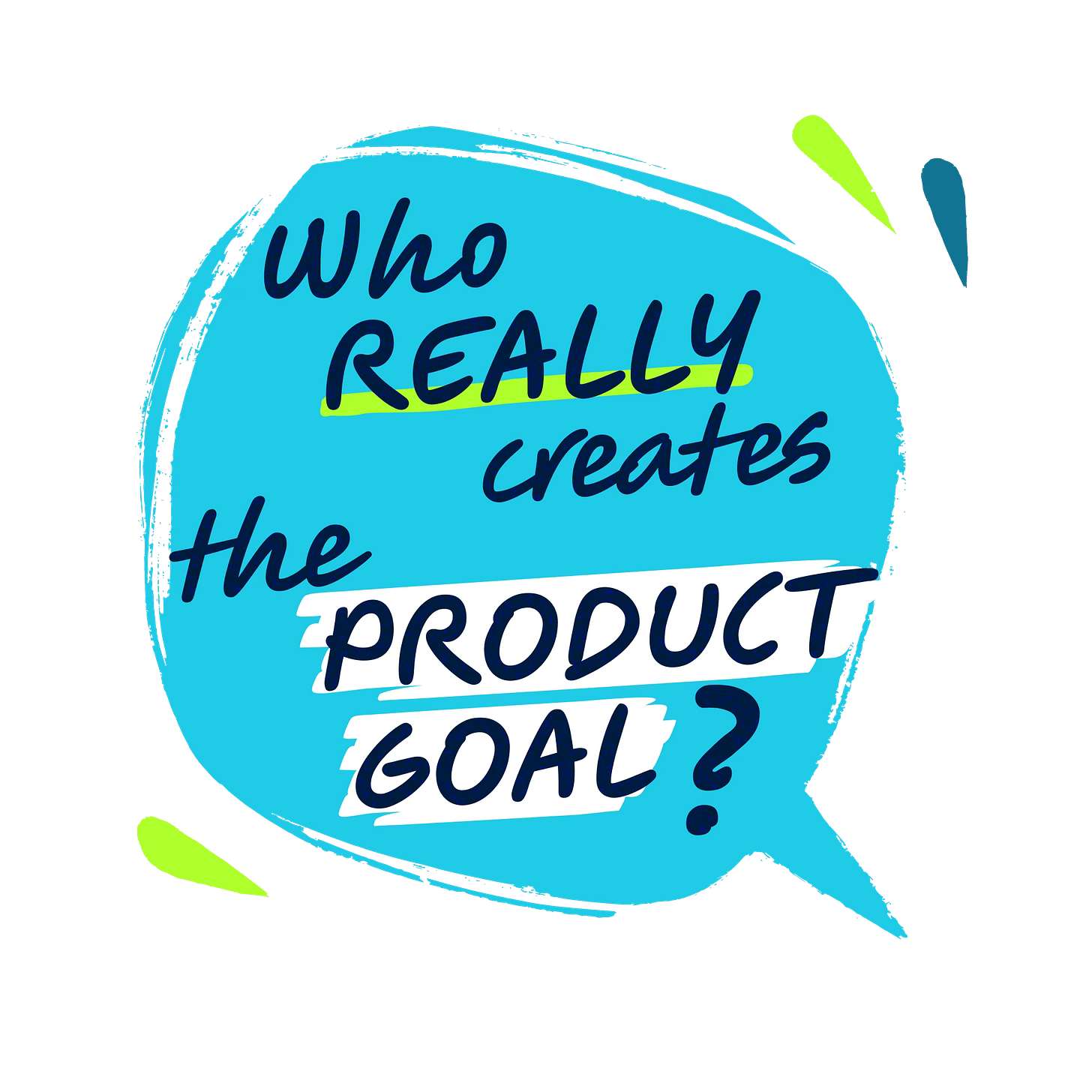Who Really Creates the Product Goal?
The Product Owner is accountable for the product goal, collaborating with the team and stakeholders to ensure the goal aligns with the product's vision and strategic business objectives.
At the heart of the Product Goal's creation is the collaboration between the product owner and the team, sustained by stakeholder insights.
This process is about understanding the product's possible and desired future state, which involves understanding the customer, the team’s capabilities, and the product's distinctive value.
1. Collaborative Effort:
The product goal emerges from a collective effort where the team's expertise and stakeholder input are crucial. This collaboration ensures that diverse perspectives shape the goal, making it robust and aligned with real-world needs. Analysing customer feedback, market trends, and the competitive landscape helps craft a goal that truly increases the probability of delivering high value to the customer.
2. Strategic Alignment:
The goal must align with the product vision and the organisation's overarching strategy. This alignment ensures that the product contributes to the broader business objectives, creating synergy across various initiatives. In a dynamic market, goals need to be adaptable. Regular reviews and adjustments ensure that the product stays relevant and competitive.
3. Transparency and Communication:
Clear communication of the product goal to all involved parties is essential. This transparency fosters a shared understanding and commitment to the goal. This commitment guides the behaviour and decisions of the team, fostering an environment that enables the achievement of the product goal.
4. Empirical Evidence and Feedback Loops:
Using empirical evidence from testing and market feedback helps refine the Product Goal. This iterative approach ensures the goal evolves with changing market conditions and user preferences.
This constant interaction with stakeholders and customers helps the team identify and deal with risks as early as possible. Understanding potential challenges ensures the product's resilience in the face of uncertainties.
5. Eliminating Waste:
In product development, it's crucial to identify and eliminate waste – any process or activity that doesn't add value to the product or customer. This lean approach increases efficiency, ensuring focus on activities that directly contribute to achieving the Product Goal.
Creating the Product Goal is a dynamic and collaborative process that balances customer needs, market dynamics, and strategic alignment. The involvement of the entire team and stakeholders, guided by the product owner, ensures a well-rounded and impactful goal. This approach helps build a product that meets customer expectations and contributes to the organisation’s overall success.



